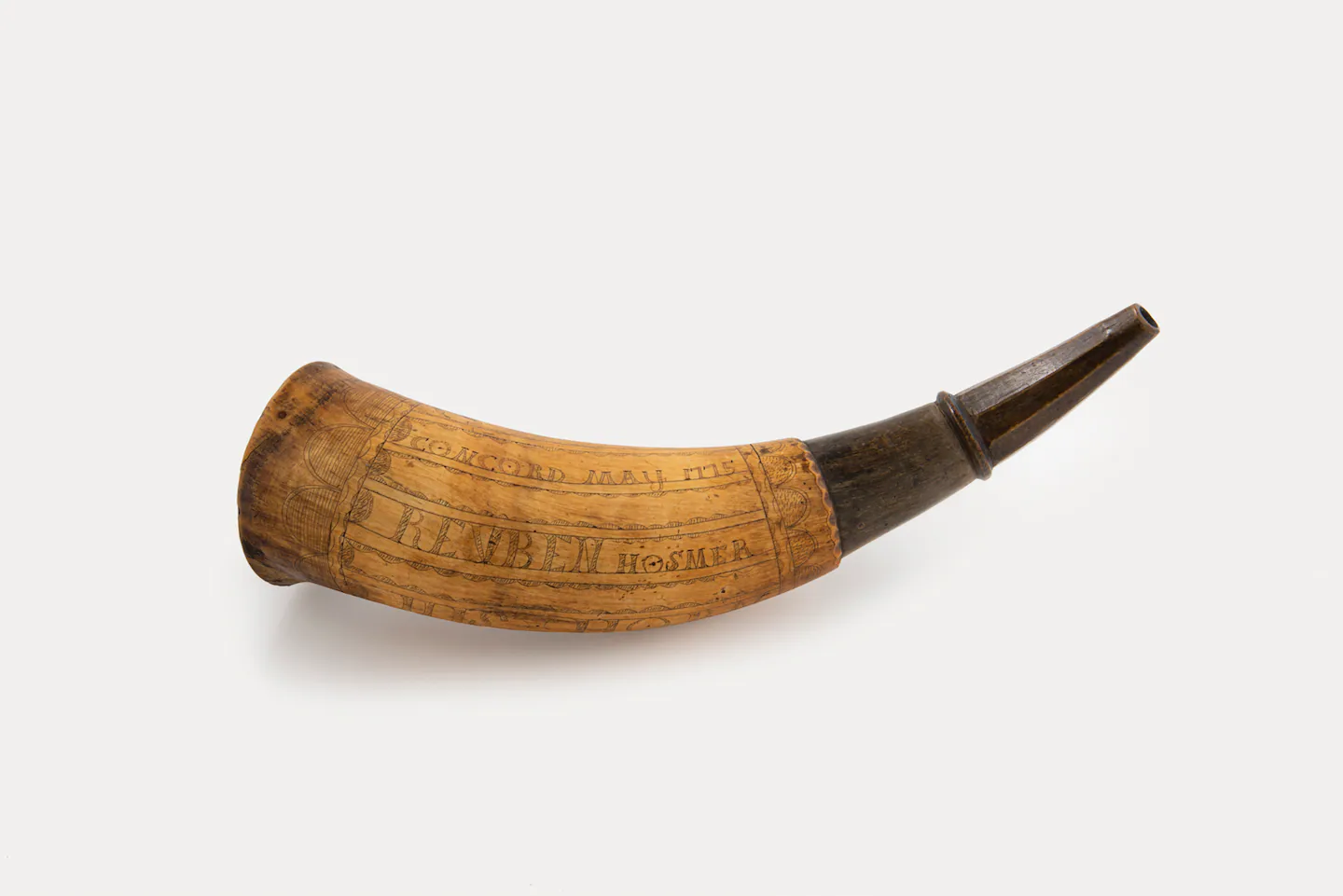
That said, the 50 items on display include a musket and powder horn — note the handsomeness of the cherry-wood stock of the former, and the engravings on the latter — as well as a muster roll for a company of soldiers from Concord. Over the course of the war, some 500 men from there served in the military — and this from a community of 1,500 residents.
At the very start of the war, Concord witnessed a very famous battle. The show includes a beam end from North Bridge, the site of that battle. Its battered wood suggests a Revolutionary War equivalent of a medieval relic from the True Cross.
Yet along with those military or military-related items there are also currency notes (in war, no less than in politics, follow the money), furniture, clothing, footwear, quilts, a sampler (made by the daughter of William Dawes, Paul Revere’s fellow rider alerting the countryside that the Redcoats were coming), a child’s doll, a game board, household items, a newspaper, a wine bottle (from a Tory’s cellar), and scientific instruments.
Those instruments point to a particularly striking example of the noncombatant effects of the Revolutionary War. For the academic year 1775-’76, Harvard College relocated to Concord. Continental Army forces were quartered in the college’s buildings during the siege of Boston. As compensation, the college paid the town 10 pounds.
“It is impossible [for students to] reap the advantage [of their tutelage] in the scattered state [here] that they may within the Walls of Harvard & its environs,” wrote Hannah Winthrop, wife of the Harvard astronomer John Winthrop. One of the scientific instruments on display was his telescope. “Transformed” includes a John Singleton Copley portrait of him.
Harvard’s move indicates how much society was in flux. Less overtly, so does the commission for Ebenezer Rockwood to serve as a regimental surgeon. The signature on the document is “State of Massachusetts Bay” but the seal on the paper says “Colony of Massachusetts.” This was December 1776. The revolution had been going on for more than a year and a half.
A new government needs new currency. Paul Revere was commissioned to print it. Other than his midnight ride, Revere is most famous for his engraving of the Boston Massacre. He used the other side of that plate to print 10-, 12-, and 18-shilling notes. In wartime, the principle of waste not, want not takes on new meaning.
Perhaps the most surprising object in “Transformed” is a cotton handkerchief from the early 1820s. Two things make it stand out. First, the handkerchief is very large: roughly 2½ feet by 3 feet. Second, it bears the text of the Declaration of Independence. Presumably, the firm of Robert and Colin Gillespie produced it in anticipation of the 50th anniversary of US independence. Come to think of it, that’s a third thing. The firm was in Glasgow. Was the handkerchief marketed with both the US market in mind, as a keepsake, and the British market, where buyers still resenting the loss of the Colonies could use the handkerchief for other than decorative purposes?
TRANSFORMED BY REVOLUTION
At Concord Museum, 53 Cambridge Turnpike, Concord, through Feb. 22. 978-369-9763, concordmuseum.org